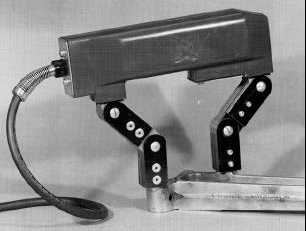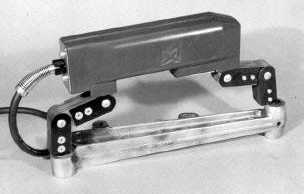T.O. 33B-1-1
3-51
Figure 3-30. Leg Positions of Articulated Leg Yoke (Sheet 2 of 3)
Figure 3-30. Leg Positions of Articulated Leg Yoke (Sheet 3 of 3)
3.4.4
Technique.
3.4.4.1
Magnetizing Source.
Both AC and DC current can be used for electromagnetic yokes. The design of a particular yoke will determine which
of the two is the appropriate current.
3.4.4.2
Alternating Current (AC).
An alternating current magnetizing field induced in a part concentrates at the surface layers of the material, and
produces a surface longitudinal field. AC provides a very desirable and useful field. Polarity reversal at the 60-hertz
rate produces a noticeable surge peak reflected in the magnetic field. Eddy currents are a by-product of AC, which tend
to guide the field basically between the poles. The vibratory action of AC adds significantly to the magnetic particle
mobility enhancing the formation and build-up of larger and sharper indications at discontinuities. Yokes magnetizing
with AC can be readily used for demagnetizing. Because of the reversing nature of AC, the residual method of
inspection cannot be used when AC is used for magnetism.
3.4.4.3
Direct Current (DC).
Direct current provides a constant, strong magnetic field. Magnetic particle mobility is minimal and the gathering of
magnetic particles at a discontinuity is quite difficult because the vibratory action of an AC field is missing. Direct
current induced fields can be successfully applied to small parts. Surface and near subsurface defects can be revealed.
The residual method of inspection may be used with direct current, but alternating current must be used for
demagnetizing.



